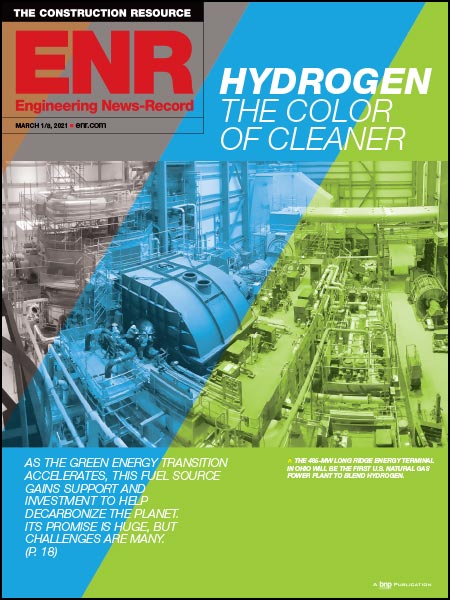The use of building information modeling is slowly taking root across the U.K., but it already is spawning app-type developments to complement it. Using BIM data, one engineering team recently launched a pioneering infrastructure carbon calculator.
Working to BIM Level 2 became mandatory for all U.K government-funded projects on April 1, but the uptake is still slow, according to a recent survey by the Chartered Institute of Building. Level 2 requires project teams to share design information from disparate 3D CAD models through a common file format.
Only 5% of professionals surveyed claimed confidence in working with BIM, while 27% admitted to being very unsure. Project owners were even less sure.
Carbon Calculator
Despite the hesitant BIM uptake, electronic data storage used in BIM underpins the Carbon Portal recently launched by London-based Mott MacDonald Group.
Able to estimate the whole-life production of greenhouse gases, the calculator is an extremely rapid and user-friendly pioneering tool, claims Davide Stronati, Mott MacDonald’s global sustainability leader. Mott is using the portal internally for now, but, later this year, says Stronati, “we want to make it … available to everybody.”
The portal is loaded with carbon data relating to whole assets, such as water pumps, rather than individual materials, Stronati explains. And instead of calculating carbon costs with spreadsheets, it uses an on-screen drag-and-drop system. The portal currently covers water, transportation and power assets.
Mott’s Carbon Portal now incorporates only U.K. data, making it less useful in forecasting whole-life costs in overseas markets. However, by allowing comparisons between project proposals, it remains a good international "optioneering" tool, Stronati says.
The portal’s launch coincides with the publication by the London-based British Standards Institute of what is claimed to be the world’s first specification on infrastructure carbon management. Written by Mott and Arup Group, London, the publicly available specification (PAS) 2080 covers whole-life carbon management for water, waste, energy, communications and transportation projects.
The voluntary standard, which carries a publication date of May 31 but is now available for download, is a 60-page guide to promote consistency in the way the infrastructure industry evaluates and manages whole-life carbon emissions. It offers recommendations to manage infrastructure carbon and practical how-to guidance to cutting cost, improving efficiency and slowing climate change.
Targeted at leaders and practitioner-level individuals in different organizations in the value chain—including the asset owners and managers, designers, constructors, and product and material suppliers who are responsible for delivering infrastructure—PAS 2080 is intended to provide a common framework for how to manage whole-life carbon when delivering infrastructure assets and programs of work.
The document states that the aim for PAS 2080 is to establish a carbon-management process for use in infrastructure delivery that can be undertaken collaboratively and applied by all parties across the value chain. Another aim of PAS 2080 is to provide a benchmark against which compliance can be measured directly or by third parties, based on a common set of understandings and terminology.
A carbon-management process that is integrated into infrastructure delivery will drive collaboration and create a culture of innovation while supporting reductions in carbon and cost by driving the use of low-carbon solution, the documents claims.
The authors say that cutting carbon is synonymous with cutting costs and that reducing the carbon footprint of an infrastructure project brings material, energy and labor efficiencies that reduce capital and operational costs as well as savings, from design to decommissioning.




